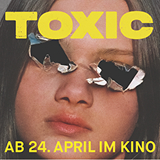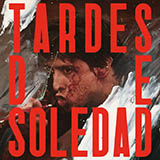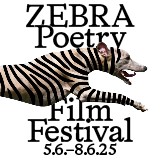
Interview
"I wanted to tell the story of love that is lived." Interview with Céline Sciamma
Céline Sciamma on PORTRAIT OF A LADY ON FIRE
Part of the fascination in your film comes from the process of discovery, from the way we, the audience, slowly get to know the face, the body, the gestures of Héloïse. How did you develop this process for yourself from a writer-director point of view?
At first, it was a quite a long process of writing. And with this I mean not writing per se, but more a dreaming. I came up with the idea right after GIRLHOOD, about five years ago. But I first let myself dream about it for two, three years without writing, except notes, like one page here and there, in which I was trying to find the right balance between the different desires, the different approaches I had in mind for this film: On the one hand, the one you're hinting at, this idea of creating a choreography of discovery, to describe this process of somebody falling in love with somebody else, and, at the same time, to describe how cinema, with all its tools and possibilities, can be accurate about it, step by step. In other words, it’s about the pleasure of discovery, but also about the delay, the frustration that comes with it. On the other hand, I also wanted to describe the course of a love story, its past, its future, this epic timeline where everything seems possible. I wanted to make a film about the dialogue of love, its philosophy and its poetry. And I needed time trying to find the right balance, but also because I wanted to push this film in a direction that would be radical and daring enough. It was important to me to find the right structure to integrate the love dialogue and the art dialogue. That was my duty, my own personal assignment. I had this ambition to convey a lot of ideas, without it being all too theoretical. Instead, I wanted this film to be playful and exciting and fun – fun to shoot and fun to watch.
Did you take your inspiration from particular paintings in order to create the aesthetic of the film?
My DP and I, we had an intensive debate around the lighting and the framing of the film, and at one point he said, ‘Okay, we’re going to do it this way, we're not going to build the lighting and the frames like it is a painting, but in the back of our head we know it’s that way.’ So, we didn’t say this whole thing is supposed to look like a Georges de La Tour painting or whatever. On the contrary. We had more references related to cinema, especially about how you light a movie with candles. But we knew that in the end, people would say that the film looked like painted because that’s exactly what cinema is about as well: It’s about lighting, composition, faces and silhouettes. So, we didn't have any particular reference from paintings, except one, but this one was kind of anachronistic, because it's not necessarily related to the time in which the film is set. But we were thinking about [Jean-Baptiste-Camille] Corot who was a French painter from the 19th century, who mostly painted landscapes. He did, however, also paint only a few portraits of women, women in landscapes. And we were excited about how the lightning seems to derive from the characters. They are lighting the painting, and we worked a lot on that, on the colours but also in terms of the wardrobe, to achieve a similar effect.
What were your cinematic references?
BARRY LYNDON is probably the biggest influence, not only to me, but in general in terms of how to light a historic movie. And I don’t mean to say that we wanted to do the same as Kubrick back then. It’s more like that: BARRY LYNDON is a film that has so many ideas in it, that makes you think for yourself. And it’s a film that makes you brave. So instead of copying anything, it’s more about setting a standard that you’re not necessarily going to apply but that you work towards. And in order to do so, we invented our own methods of creating a certain atmosphere and aesthetic of the film. In the same way Kubrick invented his own tools. He even invented a special lense to capture that exact atmosphere he wanted. And we worked in a similar vein. We also built a lot of new tools and thought about how we’re going to manage filming without putting candles in the frame, which was a very strong choice from the beginning.
In both films, yours and BARRY LYNDON, the setting plays an important role as well. It almost feels like another character.
Yes, the place where we shot the film had one strong asset, which was that it hadn't been touched at all over the years. It was an old town hall in the suburbs, in a small commune called La Chapelle-Gauthier about 70km outside of Paris. And when we found it, it wasn’t even very safe. It felt like it was stuck in time. But as soon as we set a foot in the place, we knew, that’s it and that we were not going to touch anything, which is weird, because it seems that if you do a period piece, it's all about recreating the time in which the story is set, to make it as true, make it real. Plus, all my previous film, I’ve always shot in the studio. Apartments from the suburbs, for example, they were always built, none of them where actual flats. And so, this time, I had to deal with a fourth wall. Although it seems like it would have made so much more sense to here not to shoot in a real setting. It’s kind of a paradox for me, and I like that.

"I wanted to give them time to imagine what life could be like for them in a world where they didn’t have to put up with men all the time."
You made another conscious decision it seems, which is to not have any relevant male characters in the film.
Again, it’s a choice we made from the very beginning. I mean, it's not that I cut the men in the editing room. The main reason for me was that I wanted to tell the story of love that is lived. And even though it's going to be impossible for them to get away with that story, I wanted to talk about the possibility, not the impossibility. But putting men in the frame would not have worked, because it would have shown the boundaries of what’s possible. But we know about all of them, we don't have to talk about them over and over again. I wanted to give these two women the opportunity to express themselves and to live their love fully. In other words, I wanted to give them time to imagine what live could be like for them in a world where they didn’t have to put up with men all the time.
With men, who are trying to interfere with their love.
Exactly. I consciously tried to avoid that conflict. I didn’t even want them to discuss with each other whether or not their story could be possible. But that also a dramatic choice I made, it's not a question of gender. The point was, for me, to tell the story in a way that gives them the most possible freedom that they don't have in real life. And not just imaginary freedom, I mean actual freedom. I wanted their love to feel true. But, of course, in a way it’s just a different way of talking about the boundaries that exist for women without taking time to show them because they’re obvious. For me it felt like they didn't think they could live another life. So why should I put them in the position of having to argue and fight for something they can't win?
It almost seems as if going back in time actually created a greater freedom for you as a director in the way you’re telling the story.
Yes, it was definitely a process that was freeing, and also a process that me braver as a director. Even though my films so far have all been set in a contemporary setting and could also be identified as brave, as in politically motivated. with a strong connection to the world we live in now. But this time, I wanted to take things a step further, not least in making a film about a woman artist at work. Therefore, I wanted the film to be playful, so it would also convey my own joy of making cinema. I wanted all this to be out there. That's also why the movie is so intimate. It's not because I'm telling my story, it's because I’m showing my work more openly, less as secret and more as a gift.
What is also interesting is that it is a film not only without men but almost entirely without music.
Again, that was a very early decision and a decision I had to make early on because it means I had to write the film with this in mind. And it's not that, because there's no music, the film shouldn't be musical. But the writing is different. And it means that, on set, you have to have a great sense for rhythm. But I'm obsessed with rhythm, so that wasn’t a problem. And for me, it wasn't for the challenge that I decided to get rid of music. It's because it was part of the idea to put the audience in a state where art is unavailable. In the sense that hearing music becomes something that is precious for them too. As the film talks about the relationship between art and love and how important art is in our life, I wanted it to be an organic experience. I wanted to show how we can rediscover the power of music even in the cinema. And if you think about the piece by Vivaldi in the film, it's an anthem, but it's also the typical waiting music when they put you on hold on the phone. And it was fascinating to me to create an atmosphere where you can hear something like this piece of music again that you have heard so many times, but to listen to it in a different context and with a different image attached to it.

It's a mix between pure life and a very ancient dream. I can’t explain it any better.
The final scene in the film is mind-blowing. But I can imagine from a director's point of view and also for Adèle Heanel, it must have been quite an effort to hold the shot for such a long time.
Honestly, that's the most important and most difficult shot of my life. And by that, I mean also technically challenging, because you need to hold the focus for a very long time. And the poor guy who was in charge of the focus was like sweating all the way through the take. By the end of the day this wasn’t Hollywood. So, there was this guy on this little chair on this homemade thing, pushed by some other guys across the room towards Adèle. It was all super improvised. But then, cinema is about technique. You create all these crappy tools to capture a certain moment on the big screen that moves people.
Did you always know you wanted to end the film that way?
Yes, it was the first image that I had in mind when I began to write the script. It's of these images that keeps you going when doubt takes over. And believe me, this is a film I gave up on a few times over. But I always wanted that shot, I knew that if ever, the film would end that way. It's a mix between pure life and a very ancient dream. I can’t explain it any better. Maybe that’s the very last secret that stays with me.
Pamela Jahn




